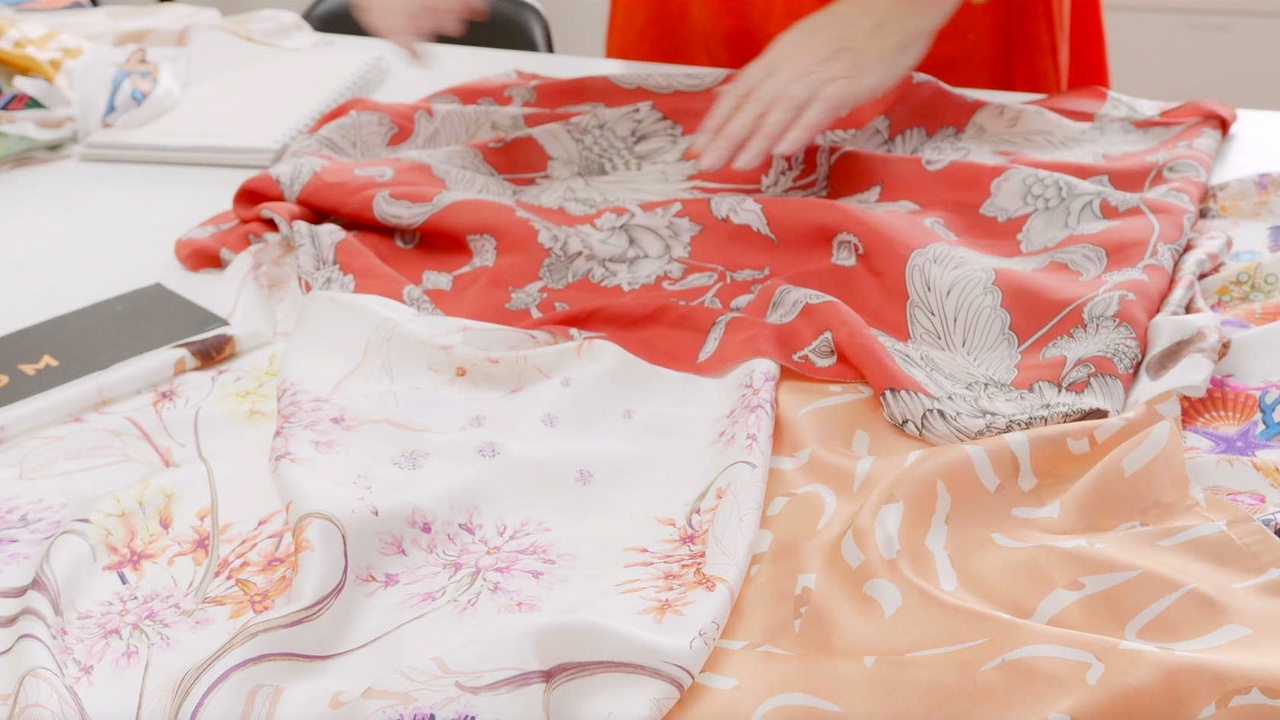How to design fabric for high-street fashion brands
Apr 14, 2022
Always wanted to see your print designs on a garment in Zara? Or Anthropologie? Or Reiss? We explain how mass production sets parameters for print designers so you can create the correct style of work for this specific customer.
Written and produced by Erin, Digital Design Media Manager
If you're reading this you're on the path. You want to make a solid living from your surface prints and we congratulate you on that! You've made the decision to create the life you've always dreamed of.
But we don't want to lie. Making it in this competitive biz takes work and a lot of learning about the print industry and how it operates. The good news is, we've created a course so we can explain everything in-depth to you. Check out our Comprehensive Business Builder for Surface Designers and sign up for the waitlist right here.
How to design fabric for high-street fashion brands
So you know that, within the realm of fashion, there are two major markets for fabric designs:
1. High street or commercial, as we call it in the industry.
This is of course your Zara, your River Island your Anthropologie, your H&M.
And then there’s
2. Designer.
This is your Givenchy, your Prada, your Prabal Gurung.
Got it? Good.
Now each of these markets has its own set of requirements for putting designs into production. Of course, one needs to mass-produce garments and uses the most effective and time-efficient practices while the other focuses more on the beauty of the finished product. So the process and labour costs are infinitely higher.
As you can imagine, these differences will impact your print design.
Bec, creative director at Longina Phillips Designs, a world-leading fabric design studio, gives you the three MOST IMPORTANT things to do when creating prints for the high street market. We’ll come back to the designer market in another post.
1. Create an all-over layout
For the layout to be suitable for mass production, it needs a design that falls across the fabric roll with flow and consistency. This means that no matter where the pattern piece is placed, the yardage will fall on the garment in a pleasing way. And the client can more easily picture it on their garment shape or on display in-store.
2. Minimise wastage
You must be able to cut the pattern pieces in multiple directions for efficient use of the fabric. This means the design itself should be multi-directional. It should flow well when you look at it upside down when your canvas is turned left and also right. When you’ve achieved this, every section of the design is useable, and therefore, less fabric will be cast aside. The client wins - less money down the drain. And the planet wins too. Less fabric in landfills!
3. Use a pleasing color palette
In the commercial market, your color palette is everything. The appeal must be wide, but not boring. Basically, you want to avoid both a flat, predictable palette and an in-your-face avant-garde one. Bec recommends aiming for somewhere in the middle. Her word for it is ‘pleasant.’
It should give you a warm, happy feeling.
Whether you're just staring out, you're already designing for a living or you're ready to see your work on the global stage, our Ultimate Handbook for Surface Designers gives you the exact blueprint that we use everyday in the Longina Phillips Designs Studio.
“We don’t like it to be too challenging but we don’t like it to be too safe either or it will just get ignored.” In other words, it will not sell.
For example, an acidic lime is a perfect pop against feminine pretty colours.
If you’re ready to turn your love of design into a successful business, then let us show you the exact steps that we have used to build our world-leading textile design studio.
You might also like...
How to design fabric for high-end fashion brands
3 crazy-good business tips from our founder, Longina Philips
5 top print and color trends for 2022
STAY IN THE KNOW
RECEIVE TREND DIRECTION, INDUSTRY INSIGHTS, BONUS TIPS AND TUTORIALS EVERY FORTNIGHT
We hate SPAM. We will never sell your information, for any reason.


